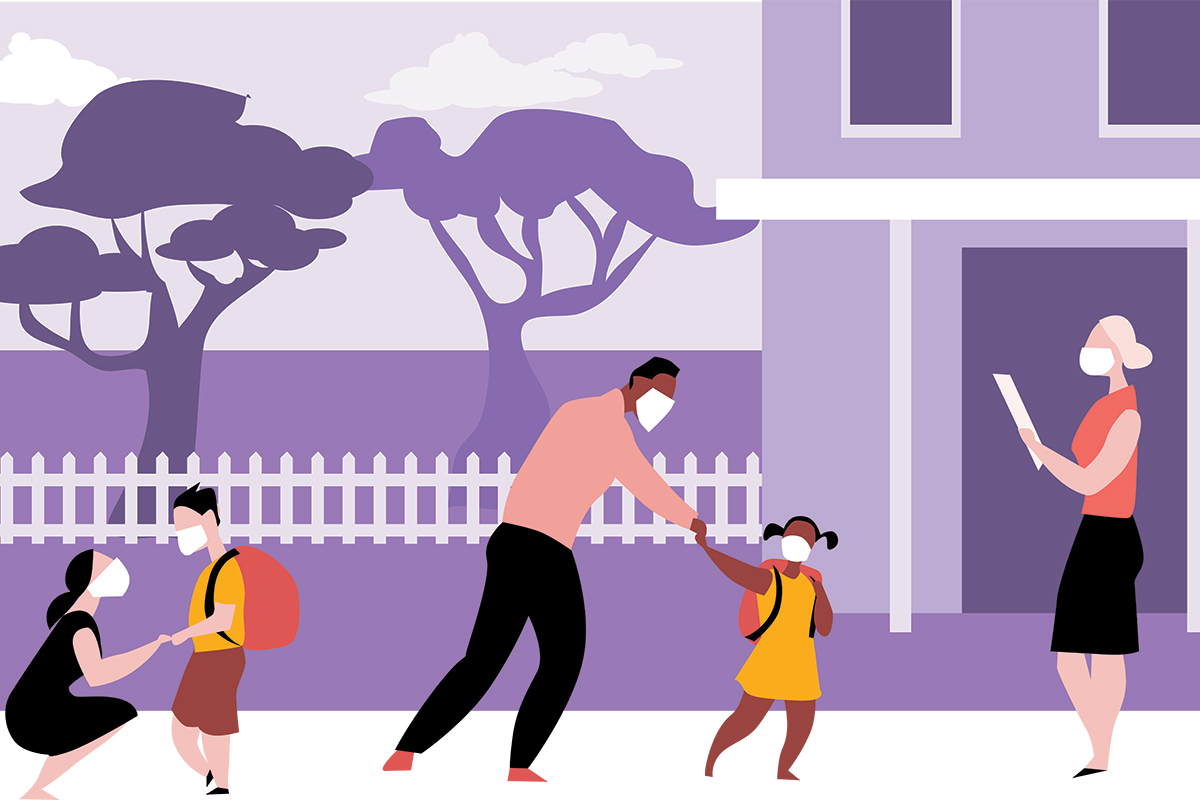By: Priscilla Wohlstetter and Katharine Parham
COVID-19 has shed new light on an old problem in education — inequities between students of color and their more privileged white peers. Students with a wide array of needs have received relatively equal levels of support, widening existing achievement gaps. Equal does not mean equitable. In a time when addressing inequities is essential to helping students through and beyond the pandemic, we need to ensure that levels of support vary depending on student’s needs.
This is the ideal moment for schools looking ahead to the summer and fall to anchor reopening policies around more equitable solutions. Flush with emergency federal aid and the potential for a historically large boost in funding from the President’s proposed budget, schools are in a prime position to think outside the box on how best to target support to address existing inequities. How might we do more than simply reopen and return to our pre-pandemic ways, but build back even better?
This is the ideal moment for schools looking ahead to the summer and fall to anchor reopening policies around more equitable solutions.
—Priscilla Wohlstetter and Katharine Parham
We argue for identifying areas that may be exacerbated when all students are treated the same, rather than customized to students’ individual needs. Three principles guide our view of equity: educational adequacy, equalizing treatment, and equal educational opportunity. Each principle offers clear directives for policymakers and practitioners working toward a more equitable reopening of schools.
Educational Adequacy
What is it? Under conditions of equity, school systems have the basic resource inputs — sufficient funding, teacher and instructional quality, and safe facilities—necessary to cultivate the skills students need to thrive in the 21st century.
During the pandemic. The federal government has made a substantial investment into K-12 schooling under the CARES Act, to the tune of $54.3 billion for public schools targeted to an education stabilization fund. The bulk of this money will go, eventually, to local school districts to address the issues that have arisen over the past year: ailing HVAC systems, medical precautions necessary for reopening, unstable budgets resulting from struggling local economies. But what comes after this jolt of aid runs out?
Moving forward. The President’s proposed budget would take a large step toward addressing some key funding inequities, proposing to double the funding headed to Title I schools and increasing special education funding by $13 billion. However, federal funding covers just 8% of the money spent on schools annually, so bold federal budget proposals, while important, will only help so much. The link between zip code and school funding (read: local property taxes) means wealthier localities have inherently better-resourced schools, receiving as much as 22% more per pupil than their high poverty district peers. Adequate education requires that schools have the appropriate resources for all students to succeed, but equal funding is not a condition of equity. States and localities should consider distributional funding methods, such as a weighted student funding formula, already adopted in several large districts, which ensure additional resources for high-needs students.

Priscilla Wohlstetter and Katharine Parham (Photos: TC Archives)
Equalizing Treatment
What is it? Equalizing treatment leverages appropriate program and service distribution (in terms of both quantity and quality) in the interest of equity. Critically, equalizing treatment does not refer to the identical treatment of students, but rather that all students receive the resource investment necessary to be successful, relative to their individual level of need. Treatment is equalizing in its effects, not in terms of its inputs.
During the pandemic. The digital divide that existed pre-pandemic has widened as schools have relied on at-home technology and WiFi for the delivery of instruction. Roughly 17 million students lacked home internet access and a quarter of low-income
teens did not have reliable access to a home computer at the start of the pandemic. These students struggled to access instruction, exacerbating issues of unfinished learning.
Moving forward. Researchers suggest that solutions to unfinished learning ought to vary not only by student needs, but also level of schooling. Tutoring programs, with a growing and promising evidence base, have the potential to help students make important academic gains. Elementary students may benefit from tutoring that occurs during the school day either one-on-one in small groups, while middle and high school students may be more successful with after school tutoring. This type of bite-sized policy solution could have huge impacts on student learning trajectories, if implemented thoughtfully.
Equal Educational Opportunity
What is it? Equal educational opportunity highlights outcomes as indicators of equity — students’ achievement, attainment, and social-emotional skills. Under conditions of equal opportunity, student outcomes should be independent of their background characteristics (e.g., race, gender, socioeconomic status).
During the pandemic. Students cannot succeed academically if their mental health is suffering, and the pandemic has tested students’ abilities to adapt to changing and often isolating circumstances. Nationwide, 75% of mental health services that youth receive are delivered through schools, and minoritized students may be at higher risk for mental health issues than White students.
Moving forward. Some states have authorized funding to provide remote counseling and health services to students through tele-health. Other efforts have focused on integrating social and emotional learning into the curriculum. All these solutions fail to consider that some school communities have been more adversely affected by the pandemic than others. Ratios of school-based health professionals to students are often the same across public schools regardless of need. For EEO, schools should prioritize the hiring of enough essential health workers to meet the specific needs of their student body, especially workers trained in the intersection of cultural diversity and mental health provision.
The pandemic has affected all students in this country for the past year, but it has not affected them all equally. Responses to a year of unprecedented challenges have focused on solutions that are distributed equally across students regardless of individual needs.
—Priscilla Wohlstetter and Katharine Parham
The pandemic has affected all students in this country for the past year, but it has not affected them all equally. Responses to a year of unprecedented challenges have focused on solutions that are distributed equally across students regardless of individual needs. However, we know now that these solutions have had disparate effects on economically disadvantaged students, special education students, and English language learners. Reopening schools must do more than the bare minimum of returning to pre-pandemic norms. At this watershed moment, policymakers, practitioners and school leaders must all consider how to leverage additional funds to ensure individualized student supports are available and targeted, in order to address the true goal: an equitable education for all.
Priscilla Wohlstetter is a Distinguished Research Professor at Teachers College, Columbia University. Katharine Parham is a Researcher and Ph.D. Candidate at Teachers College, Columbia University.
